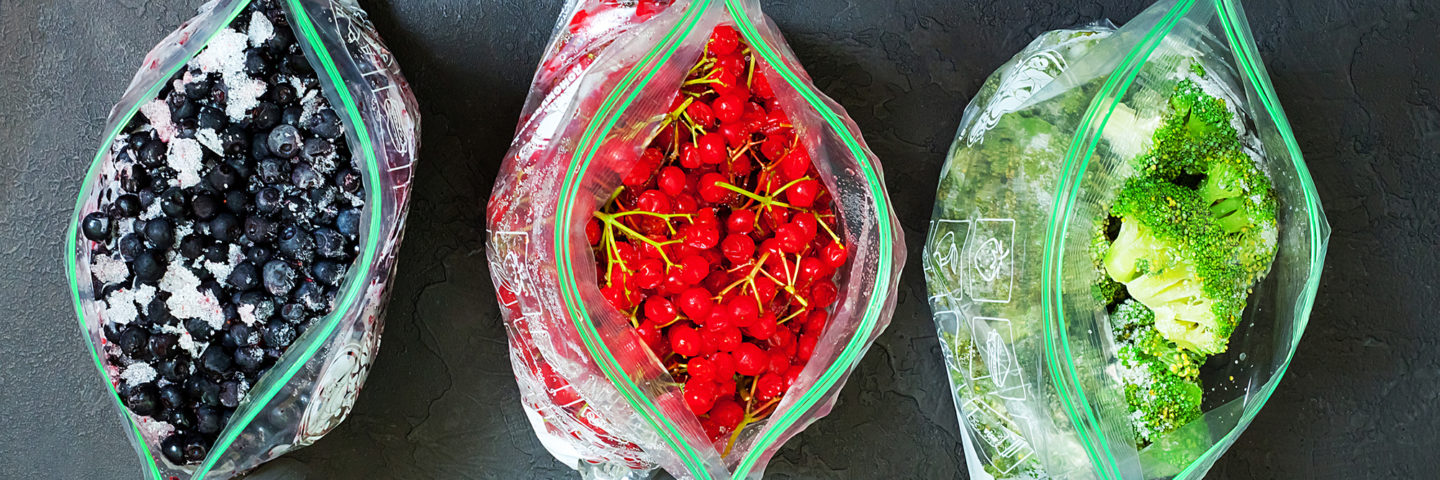
Getting Produce From The Fridge To Our Bellies
According to the CDC’s 2018 report, only 12.2% of Americans meet the daily fruit intake recommendation and only 9.3% of adults meet the daily vegetable intake recommendation. But a shocking statistic from the USDA says that food waste is estimated to be between 30 and 40 percent of the food supply. So what is happening between the fridge and our bellies?
As a Registered Dietitian, I know there are several barriers to eating our fruits and vegetables, but getting to the grocery store every week is definitely one of them. While most Americans fill up their freezers with processed quick meals, filling up the freezer with frozen fruits and vegetables instead will help you stretch the grocery trip. Buying in-season produce not only supports local growers, but it also is an affordable way to incorporate great-tasting and better-for-you produce. Stocking up on in-season produce and freezing allows you to save it for a later date without the risk of spoilage. Fun Fact: freezing produce also tends to stop changes in nutritional value and keeps it at its peak maturity. It’s nutritious and delicious!
Stop by your local farmers market this summer when there are ample strawberries, raspberries, blueberries, peaches and more. Put them on a cookie sheet and place in the freezer to prevent them from sticking to each other. Then you can put them into individual bags to use for smoothies or snacks.
Know How to Blanch
Blanching veggies that would normally be served cooked can help preserve them during freezing. Boil water in a covered pot, place washed vegetables in the boiling water (works best with broccoli, carrots, cauliflower, brussels sprouts). The time for blanching is dependent on the type of vegetable, but 2-9 minutes is a good start. Immediately place vegetables in ice-cold water and drain them. Vegetables can be frozen for about 1 year.
A few things you can freeze that you didn’t know?
- You can peel and mash avocado and freeze.
- Try freezing figs! They make a great pizza topper with goat cheese or an addition to a sweet smoothie!
- Freeze pre-cooked spaghetti squash to save on time to prep and eliminate waste if you can’t finish the whole squash!
- Chop or slice up fresh herbs from your garden and save them in ice cube trays for amazing flavors during winter.
References:
https://www.cdc.gov/nutrition/downloads/fruits-vegetables/2018/2018-fruit-vegetable-report-508.pdf


